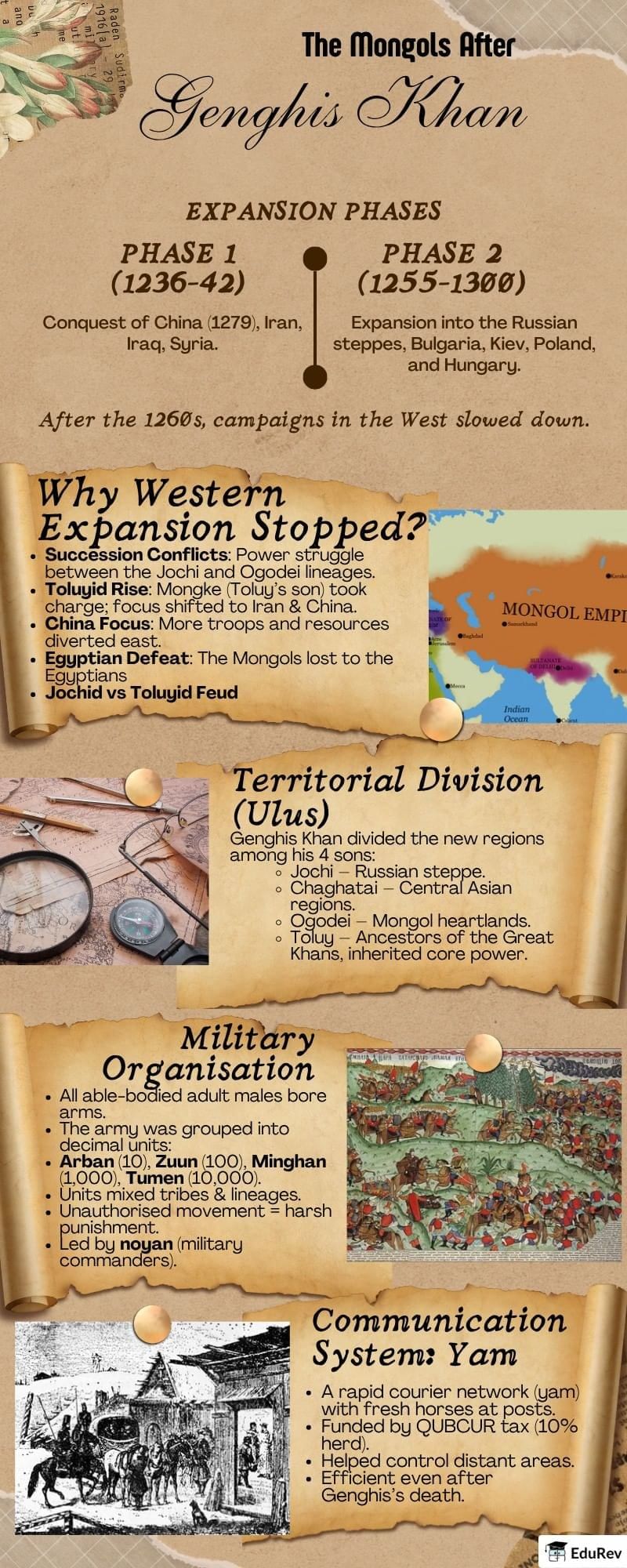Humanities/Arts Exam > Humanities/Arts Notes > History Class 11 > Infographic: Nomadic Empires
Infographic: Nomadic Empires | History Class 11 - Humanities/Arts PDF Download

The document Infographic: Nomadic Empires | History Class 11 - Humanities/Arts is a part of the Humanities/Arts Course History Class 11.
All you need of Humanities/Arts at this link: Humanities/Arts
|
27 videos|157 docs|27 tests
|
FAQs on Infographic: Nomadic Empires - History Class 11 - Humanities/Arts
| 1. What are the defining characteristics of nomadic empires? |  |
Ans. Nomadic empires are characterized by their mobile lifestyles, wherein groups move frequently in search of pastures and resources. They often have social structures based on kinship and tribal affiliations, with leaders chosen for their skills in warfare or negotiation. Economically, these empires rely on herding and trade, facilitating cultural exchanges with settled societies.
| 2. How did nomadic empires influence trade routes? |  |
Ans. Nomadic empires played a crucial role in the development of trade routes, particularly the Silk Road. Their mobility allowed them to act as intermediaries between different cultures and civilizations, facilitating the exchange of goods, ideas, and technologies. They often controlled key passages and contributed to the safety of these routes through alliances and military strength.
| 3. What impact did nomadic empires have on settled civilizations? |  |
Ans. The influence of nomadic empires on settled civilizations was significant, leading to cultural exchanges, military conflicts, and economic interactions. Nomadic groups often introduced new technologies and practices, such as horseback riding and warfare strategies, while also contributing to the spread of religions and trade goods, which enriched the cultures of sedentary societies.
| 4. Can you name some prominent nomadic empires in history? |  |
Ans. Notable nomadic empires include the Mongol Empire, which became the largest contiguous empire in history, and the Xiongnu Empire, which was one of the first organized nomadic states. Other examples include the Huns, the Scythians, and the Seljuk Empire, each of which left lasting impacts on the regions they interacted with.
| 5. What role did warfare play in the expansion of nomadic empires? |  |
Ans. Warfare was a fundamental aspect of the expansion of nomadic empires, often driven by the need for resources, territory, and trade routes. Nomadic warriors were typically highly mobile and skilled in cavalry tactics, which allowed them to execute swift raids and conquests. Additionally, military success helped to establish alliances and consolidate power, further enabling the growth of these empires.
Related Searches





















